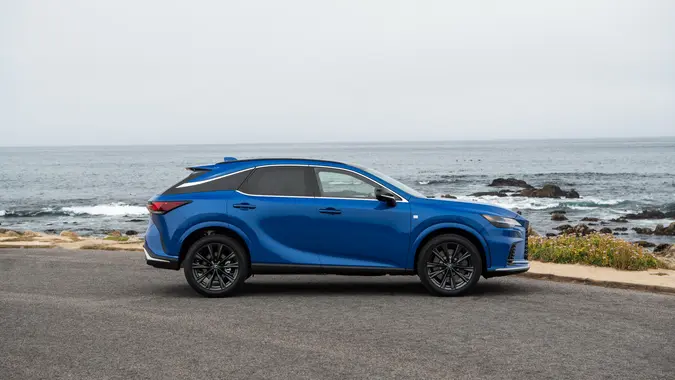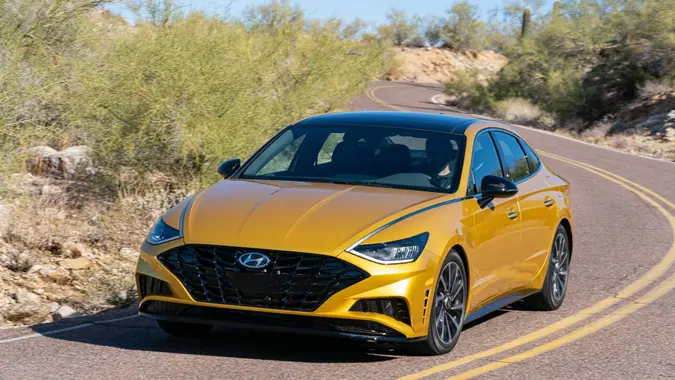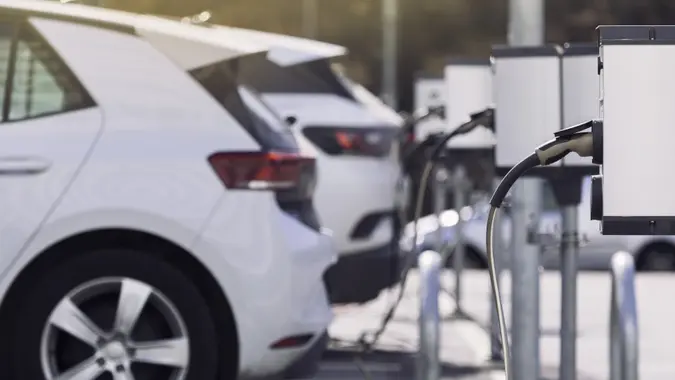3 Signs You’re Overpaying On Car Insurance

Commitment to Our Readers
GOBankingRates' editorial team is committed to bringing you unbiased reviews and information. We use data-driven methodologies to evaluate financial products and services - our reviews and ratings are not influenced by advertisers. You can read more about our editorial guidelines and our products and services review methodology.

20 Years
Helping You Live Richer

Reviewed
by Experts

Trusted by
Millions of Readers
According to Forbes, the national average cost of full-coverage car insurance is $2,150 a year, with rates ranging from $1,412 to $3,233. This means an $118 to $269 monthly payment in many cases.
If your bill comes out to more than the average in your area, you’re not alone. Many people overpay for car insurance and don’t even realize it.
Here are the signs that you might be one of them and what you can do about it.
Your Rates Are Still Increasing
“If your rates are increasing significantly despite maintaining a clean driving record, that’s a key sign you might be overpaying for car insurance,” said Maya Afilalo, Industry Analyst at AutoInsurance.com.
“Rates have risen substantially — by nearly 50% since 2020 — but you may still find cheaper rates with another provider.”
Review your records for the past few years to see how much you’re paying for car insurance. If your records don’t go back that far, check what you have.
If your rates have been going up, it’s probably a sign that it’s time for a change.
You Don’t Qualify for a Low Mileage Discount (But Should)
“You might also be overpaying if you drive infrequently but aren’t qualifying for a low mileage discount, or participating in pay-per-mile/usage-based insurance,” said Afilalo.
Many major car insurance companies, like Allstate and Progressive, offer low-mileage car insurance. Getting a low-mileage plan could save you money compared to a standard car insurance policy.
What’s considered low mileage varies by company. According to The Zebra, an insurance marketplace, it’s generally anywhere from 0 miles to roughly 7,500 miles or so per year. In comparison, the typical insured driver in the U.S. drives closer to 12,000 miles annually.
“If you are a low mileage driver (typically less than 8,000 to 10,000 miles annually), look into whether a usage-based insurance or pay-per-mile program could save you money,” said Afilalo.
Options to save here vary. For example, you could find a standard insurance plan with a low-mileage discount. You might even qualify for this with your current provider, though you’ll have to ask them about it.
Alternatively, you could potentially get “usage-based insurance,” or telematics. This involves using a mobile app or installing a device in your vehicle that tracks your driving habits and mileage. If you’re a safe driver who doesn’t drive much, this could mean significant annual savings.
If you rarely ever drive, you could simply get “pay-per-mile” insurance, which is exactly how it sounds — you pay only for what you need. Not all companies offer this (or any of these options), so contact yours to see what’s available.
You’re Struggling to Keep Up
With the average annual rate of car insurance being over $2,000, it may simply be that you’re struggling with monthly — or biannual or annual — payments. If that’s the case, it’s a clear sign that it’s time to make a change.
While you may not be able to cancel your insurance altogether, at least not if you’re still actively driving, you could get a cheaper policy. Comparing different companies and policy options might be your best bet for getting a more reasonable premium.
Check out small and large companies, their coverage options and rates to see what works best with your budget. If you have multiple insurance policies, one for each different vehicle you own, consider changing your coverage for any cars you rarely or never drive.
More Ways To Save on Car Insurance
Besides trying out a different type of car insurance — like a pay-per-mile or usage-based policy — you could also save in other ways. The first step is to shop around.
“Get quotes from at least three providers and compare them to see whether you could pay less with another company,” said Afilalo. “Providers offer different discounts and weigh factors differently when calculating premiums, so one company might be significantly cheaper for you than another.”
You can shop around manually, or you can use a car insurance comparison website to do this. Alternatively, change your coverage level. There are a few ways to do this.
“For example, if you drive an older car that is paid off, it might not be worth carrying comprehensive and collision coverage if the premiums are greater than the car’s value,” said Afilalo.
Another option is to increase your deductible.
“Raising your deductible can reduce premiums — just make sure you can cover the new deductible if needed,” said Afilalo.
Last but not least, look into discounts. According to Afilalo, many insurance companies offer a discount when you bundle different insurance policies — like homeowners/renter’s and car insurance.
 Written by
Written by  Edited by
Edited by 

























